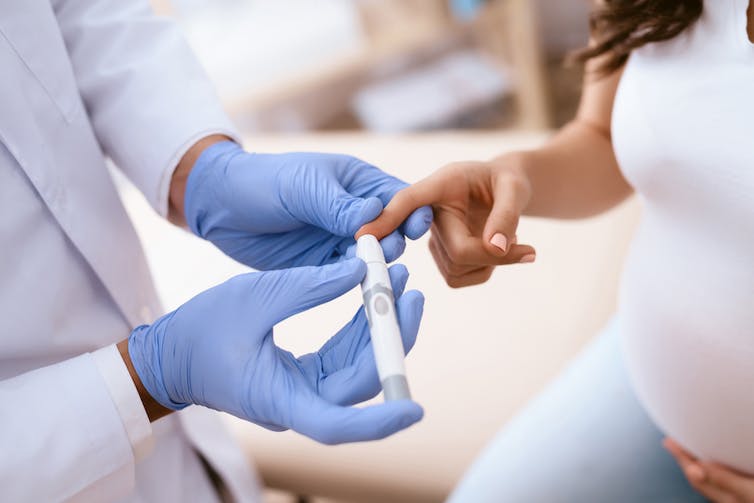![]() A mother in Brazil recently gave birth to a two-foot-tall baby weighing 16lb (7.3kg). Angerson Santos was born via caesarean section at Hospital Padre Colombo in Parintins, Amazonas State.
A mother in Brazil recently gave birth to a two-foot-tall baby weighing 16lb (7.3kg). Angerson Santos was born via caesarean section at Hospital Padre Colombo in Parintins, Amazonas State.
Angerson eclipsed the heaviest baby girl on record, who was 15lb (6.8kg) when she was born in 2016, but neither come close to the heaviest baby on record, who tipped the scales at a whopping 22lb 8oz (10.2kg), in Italy in 1955.
To put this in perspective, newborn boys typically weigh 7lb 6oz (3.3kg) and girls 7lb 2oz (3.2kg).
The term used to describe these giant babies is macrosomia (Greek for large body). Any baby that weighs more than 4kg, regardless of its gestational age, is said to have macrosomia.
Babies with macrosomia account for about 12% of births. In mothers with gestational diabetes (high blood sugar that arises during pregnancy), this increases to between 15% and 45% of births.
Increased risk
Certain factors increase the risk of a mother giving birth to a giant baby – one of them being body weight. Obese mothers are twice as likely to have a newborn with macrosomia. And excessive weight gain during pregnancy likewise increases the risk of macrosomia.
Gestational diabetes is a risk factor, too. (The doctors at Hospital Padre Colombo put Angerson’s large size down to his mother’s “diabetes condition”.) Some of it is linked to an increase in insulin resistance in the mother during pregnancy (even in those without gestational diabetes), which increases the amount of glucose that travels across the placenta to the foetus, helping the foetus to grow excessively. The condition also helps lipids (fats) to enter the placenta, providing the baby with more fuel for growth.

Being older when pregnant also increases the odds of having a baby with macrosomia. A maternal age greater than 35 makes it 20% more likely that the baby will have macrosomia. The father’s age counts, too. A paternal age greater than 35 increases the risk of macrosomia by 10%.
Previous pregnancies increase the risk of macrosomia because with each successive pregnancy, birth weight increases. Overdue pregnancies – those that run past the typical 40 weeks – also increase the risk of a baby being macrosomic, particularly at 42 weeks or more.
Having a boy increases the likelihood of macrosomia. Boys are three times more likely than girls to be born macrosomic.
Harms during birth
Babies with macrosomia are more likely to encounter difficulties moving through the birth canal because of their large size. For example, it is quite common for the baby’s shoulder to get caught behind the mother’s pubic bone. The medical term for this is “shoulder dystocia”.
While the baby is stuck, it cannot breathe and the umbilical cord may be squeezed. It can also cause the baby’s collarbones to break or damage the brachial plexus nerves that supply the arms – in the most severe cases, this damage can be permanent. Shoulder dystocia occurs in about 0.7% of all births, but in macrosomic babies, the incidence is about 25%.
Mothers are also at increased risk of vaginal tear during delivery, which then increases the risk of postpartum haemorrhage (bleeding). Postpartum haemorrhage is the leading cause of maternal death worldwide, and hence the larger the baby, the greater the risk of damage during normal vaginal delivery.
Macrosomia of newborns also leads to an increased risk of a prolonged second phase of labour, which is when the cervix is fully dilated and the baby’s head moves into the vagina. Due to the size of macrosomic babies, this movement can be slower than usual which can increase the risk of the mother suffering from infection, urinary retention and haematoma (internal bleeding).
One thing we don’t know about macrosomic babies is whether they stay bigger throughout life. The limited data there is does exist suggest that they are more likely to be overweight or obese by the age of seven and are also more likely to develop type 2 diabetes in later life.
We may see more “giant” babies being born as those born after 1970 appear to be about 450g heavier than their pre-1970s counterparts. Similarly, with increasing rates of obesity, which is a major factor in the development of macrosomia, we will probably see more “giant” babies. ![]()
Adam Taylor, Professor and Director of the Clinical Anatomy Learning Centre, Lancaster University
This article is republished from The Conversation under a Creative Commons license. Read the original article.
Source Link: Sixteen-Pound Baby Born In Brazil: Here’s What Increases The Risk Of Giving Birth To A Giant Baby